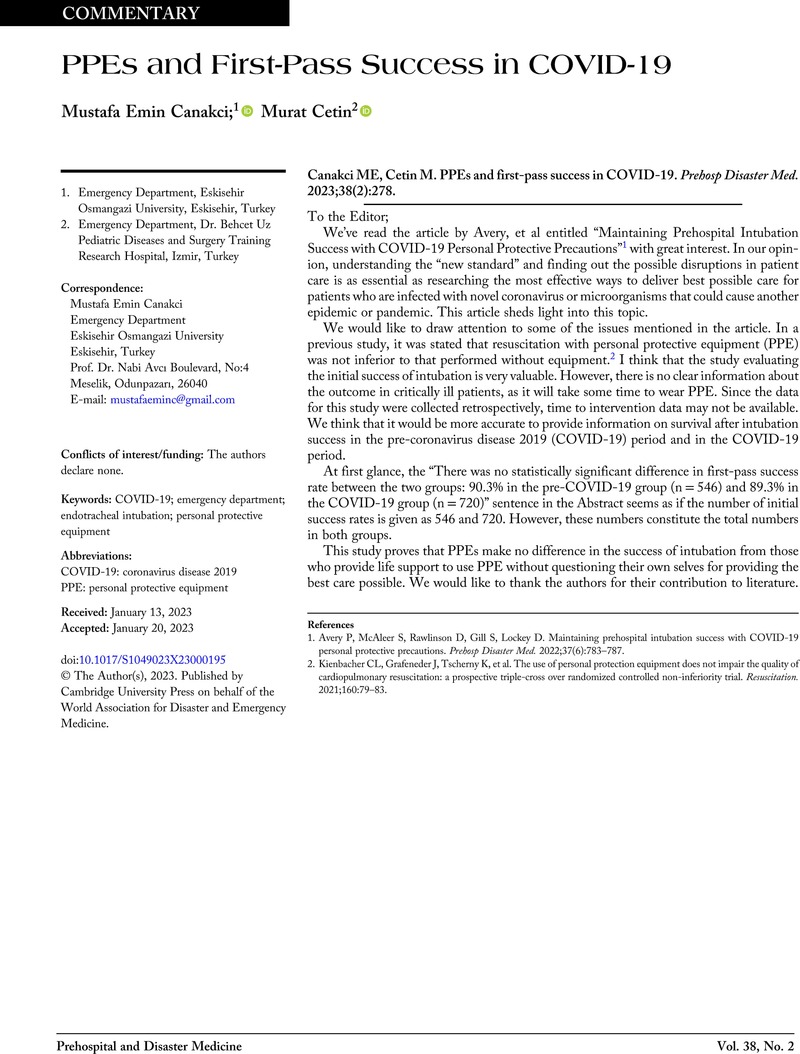No CrossRef data available.
Article contents
PPEs and First-Pass Success in COVID-19
Published online by Cambridge University Press: 17 February 2023
Abstract

- Type
- Article Commentary
- Information
- Copyright
- © The Author(s), 2023. Published by Cambridge University Press on behalf of the World Association for Disaster and Emergency Medicine



